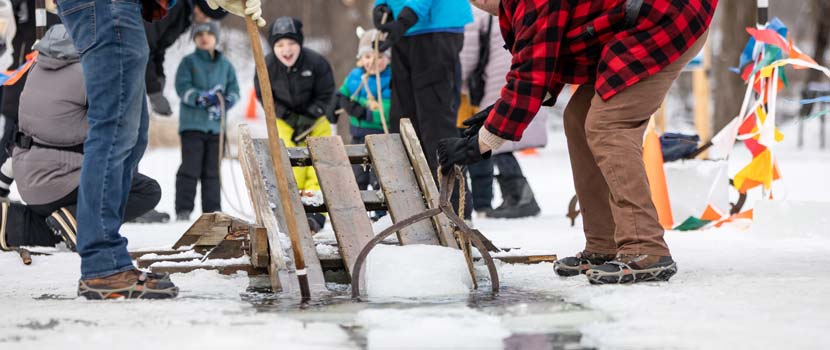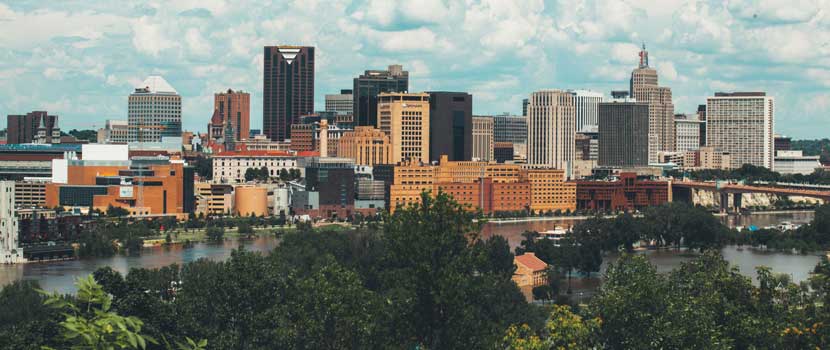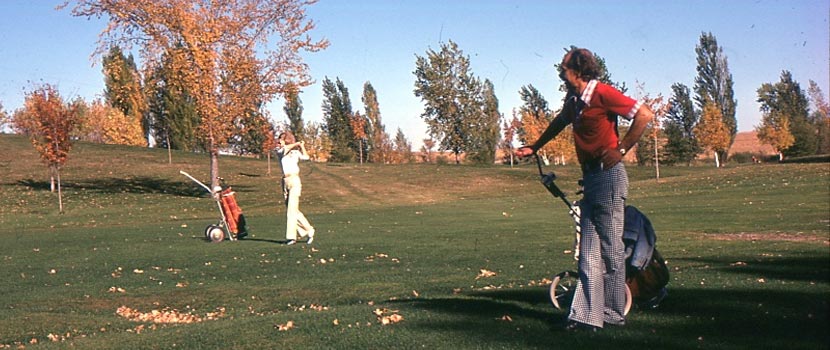
A Fresh Air Retreat: A History of Summer Camp at Silverwood Park
By: Andy Sima
June 29, 2023
Category: History
Long days, clear skies and bright sunshine always mean one thing: summertime. More hours of daylight combined with warmer weather make perfect conditions for splashing in a lake, tromping through the woods or picnicking with friends — which are also key components of summer camps.
Within the Twin Cities area, many children and families are making memories right now at the summer camp programs offered by the Three Rivers Park District. But one park holds a deeper connection to summer camps than most. Believe it or not, Silverwood Park in suburban St. Anthony, just 20 minutes from downtown Minneapolis, was once a cherished, dedicated summer camp. The space served more than 75 years of adventure to tens of thousands of inner-city youths before it became the Silverwood Park we know today.

Building a Fresh Air Camp
Although the land was used by native peoples and Euro-American settlers for many years, the story of summer camp at Silverwood starts in 1921 with the arrival of the Salvation Army. The Salvation Army is a religious charitable organization focusing on the physical and spiritual needs of people in poverty. The organization bought land on Silver Lake in Ramsey County and had big plans to fit it into their larger goals.
And their larger goals at the time were focused on the health of children in the Twin Cities. The cities of 1920s America were much like the dirty, swampy mess of old industrial London, especially with smog, industrial waste and diseases like Tuberculosis spreading like wildfire in the summertime.
The cure for both the pains of industrialization and childhood diseases was thought to be “fresh air,” a general term that could applied to any place that got people out of the muck of the city. From mountain retreats to tuberculosis sanatoriums to Fresh Air Schools, the idea of nature as a treatment for disease was well-established by the 1920s. It is surely no coincidence that summer camps began to appear around that same time.
A desire for nature and clean environments pushed people to go to summer camps back then just as they do now. It is a long-held belief that connections to nature are crucial to childhood development, in addition to preventing disease. People feel better after being out in nature. Modern ideas drawing on “nature deficit disorder” and “no child left inside” that guide policies today trace their roots back to the Victorian era when more people began living in urban centers.
The Salvation Army found their own “fresh air” opportunity with the Salvation Army Fresh Air Camp, also called the Silver Lake Camp. In 1921, the camp was built under the suggestion of the Hennepin County Advisory board and inspired by the Salvation Army’s success with summer camps elsewhere. This noble effort was spearheaded by Colonel William Barker, a local leader in the Twin Cities Salvation Army.
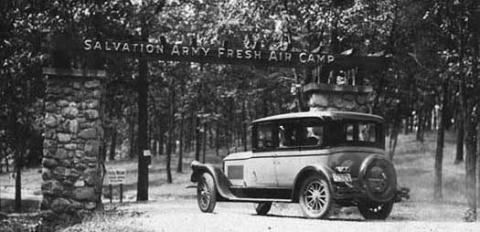
The purchased land was composed of two islands and a rural woodlot on the north side of the lake. Because the rural, secluded farmland was accessible by car yet, at the time, far from the city, it was perfect for building a fresh air camp. The joint efforts of the Minneapolis and St. Paul Salvation Army units secured the property and began constructing a remote summer camp.
The Silver Lake Camp was developed with the specific goal of providing free summer camp to impoverished, inner-city children — a goal as charitable as it was practical. The camp offered a fun, free and valuable summer camp experience at a time when other summer camps were only for the well-to-do. It was also a means of getting children temporarily out of the crowded tenement homes, sewage-strewn streets and polluted factory yards of the industrial 20th century Twin Cities.
First Day at Camp
The Silver Lake Camp offered children an opportunity to connect with nature that was lost in the inner cities. They also offered high-quality meals and on-site medical examinations, ensuring that the children who came to camp were healthier by the end than they were at the beginning. Because the need for the camp was so great, the camp was open to guests the same year it was purchased, even though buildings had not been built yet.
The first campers arrived to find canvas tents and an army tanker of drinking water instead of the Swiss-Chalet style cabins and electric lights that would later dot the landscape. This did not bother the first campers. As children told newspapers at the time, many of them had never ridden in cars before being driven to camp by the Salvation Army. Many had never even been outside of the Twin Cities. And feeling far away from the Twin Cities was precisely the camp’s goal.
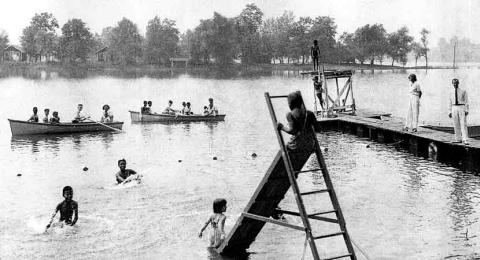
Those early years of the camp were full of laughter and play, with children of all ages swimming, running, boating, fishing, horseback riding, and more. Baseball was a favorite pastime for many, and campfires with songs and skits were nightly occurrences. Every day, campers were expected to attend all meals and keep their cabins clean for inspection at 10 AM, but until bedtime, there was free reign. For two weeks at a time, around 150 children (and their mothers, who learned hygiene and first aid) would occupy themselves with whatever their hearts desired, eating three square meals a day.
For children of families who may not have been able to afford enough food for everyone, this was considered especially crucial to their development. Although it may seem strange now, a newspaper article from 1922 proudly declared that the campers had collectively gained over 2.5 tons of weight. The Silver Lake camp made special efforts to supply healthy food with dedicated chefs and nutritionists, because if the children were having fun, putting on weight, and avoiding urban illnesses, the camp was a success.
And it worked for more than 75 years. As modern medicine improved and childhood illnesses receded into memory, the needs of youth changed, too. New developments came to the camp. The camp’s name changed, largely dropping the “Fresh Air” title. New buildings were added, playgrounds were constructed, and new nature programs were developed. The scope of youth that attended camp also broadened. Music camps became popular in the ‘40s and ‘50s, and people today still fondly remember attending music camp at Silver Lake. The camp continued to see major improvements through the ‘70’s and ‘80s, like a major remodel after a tornado in 1984.
For the Salvation Army Fresh Air Camp, life in the days of summer camp was good. But it could not last forever.

Silverwood, Then and Now
As years passed, the surrounding countryside changed. With the post-war housing boom of the 1950s, suburban expansion from the Twin Cities had exploded outward, converting farmland into residential developments. Even as early as the 1960s, Silver Lake Camp was no longer a neighbor to farm fields, but modern houses. The Salvation Army’s rugged woodland retreat was not so rugged anymore.
In 1999, the Salvation Army decided it needed a more rugged outdoor space than the suburbanized Silver Lake Camp provided. They decided to sell the property, and in 2001 they found their buyer in the Three Rivers Park District. The sale funded the Salvation Army’s new Northwoods Camp, located east of Lake Mille Lacs (which still operates today).
The Salvation Army Fresh Air Camp was to be no more. All its structures, except for one stone pillar and a few administrative buildings (which are now educational classrooms and office space at Silverwood), became only photographs and memories.
In its place, Silverwood Park opened in 2009 and was developed to meet the standards for a new era of outdoor education and to conserve nature in urban spaces. What was once a way to bring the city to nature is now a way to bring nature to the city. And although the summer camp itself is gone, the spirit of summer camp lives on.
Visitors to the park can still hike in the woods, fish from the lake’s shoreline, take out a boat, even listen to live music, just as generations of children have done. But Silverwood Park was also built to emphasize art and nature, with special themed public programs, walking art trails, large sculptures and a rotating gallery showcase.
Silverwood keeps the fresh air camp’s tradition of making nature accessible to all while adding a modern, artistic spin. From hands-on art classes, live music and dance, fishing, canoeing and hiking around the lake, and brand-new outdoor activities for today’s kids, the summer camp spirit at Silverwood remains.

About the Author

Andy Sima worked as a historical interpreter at The Landing, before moving to Sweden to attend graduate school in Landscape Ecology. His favorite building at The Landing was the old wooden one. He previously worked as a seasonal naturalist at Baker Outdoor Learning Center and at Philmont Scout Ranch. He loves birds and hiking and writing and sometimes enjoys writing about hiking and birds. Sometimes he makes maps. His favorite bird is, currently, the barred owl.
Related Blog Posts
Learn about the 25-year history of Three Rivers’ ice harvest celebration and what this event can tell us about the climate.
A Tale of Twin Cities: Nature's Starring Role in the Founding of Minneapolis and St. Paul
By: Bill Walker
Did you know that nature is at the very heart of the story of how the Twin Cities came to be? Like this year’s spring floods, it all started with an extreme buildup of snow and ice. Learn about the series of events that led to the founding of Minneapolis and St. Paul.
The History of Finding Peace in the Parks
By: Mandy Wintheiser
For centuries, parks have provided people an outlet from the stress of daily life. Learn about the history of parks in the U.S., including Three Rivers Parks, as places for relaxation and leisure.
